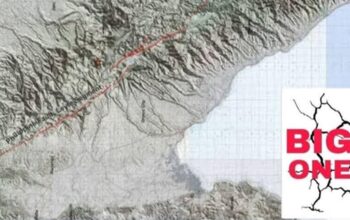THE peso weakened sharply against the dollar yesterday, sinking back to the 57:$1 level for the first time in two months following the Bangko Sentral ng Pilipinas (BSP)’s latest policy rate cut and renewed demand for the greenback.
The peso closed at 57.45 against the dollar yesterday, after shedding 47 centavos from Wednesday’s 56.98 finish, data from the Bankers Association of the Philippines showed.
This marked the peso’s lowest close since March 26, when it settled at 57.69.
The local currency opened weaker at 57.10, which was also its intraday high, and hit an intraday low of 57.45 before closing at that level. Total volume surged by 44.1 percent to $1.83 billion from $1.27 billion in the previous session.
A trader attributed the – Keisha Ta-asanpeso’s slide to a narrowing interest rate differential between the Philippines and the United States after the BSP trimmed policy rates by 25 basis points, bringing the benchmark rate to 5.25 percent.
The move followed a hawkish tone from the US Federal Reserve, which signaled fewer rate cuts this year. The US central bank held interest rates steady for a fourth consecutive meeting on Wednesday.
“The dollar-peso reached 57 due to the prospects of a narrowing interest rate differential, following the Fed’s hawkish tone last night and the BSP’s rate cut,” the trader said. “There’s also safe-haven demand for the dollar amid the Israel-Iran conflict.”
BSP Governor Eli Remolona Jr. downplayed the need for strong foreign exchange intervention, saying the central bank only acts to smoothen volatility and ensure liquidity in the market.
“We are developing a playbook for intervention,” Remolona said.
“Usually, when the peso depreciates due to strong dollar flows, we don’t intervene strongly because we won’t have enough reserves to maintain a particular exchange rate,” the BSP chief added.
He also said that only a sustained and significant depreciation would warrant a stronger response from the BSP, citing the risk of inflation pass-through.
“The pass-through from the exchange rate to inflation has come back to haunt us. But moderate depreciations don’t really affect the inflation environment. If the peso continues to fall for several weeks, then we might have to intervene more seriously,” Remolona said.
The BSP has now slashed rates by a total of 125 basis points since August 2024, as inflation continues to ease and economic activity slows.
Analysts at ING Bank noted that the peso was one of the few underperforming Asian currencies in the past month, alongside the Indian rupee, while developed Asian currencies such as the South Korean won and Japanese yen posted gains.
“The Philippines is where we could see higher oil prices having a more damaging impact. The country has the largest current account deficit in the region, driven by rising imports and softer remittance growth, making it highly vulnerable to oil price shocks,” ING said.
The Philippines recorded a current account shortfall of $4.2 billion equivalent to 3.7 percent of gross domestic product in the first quarter. (Keisha Ta-Asan / The Philippine Star)



